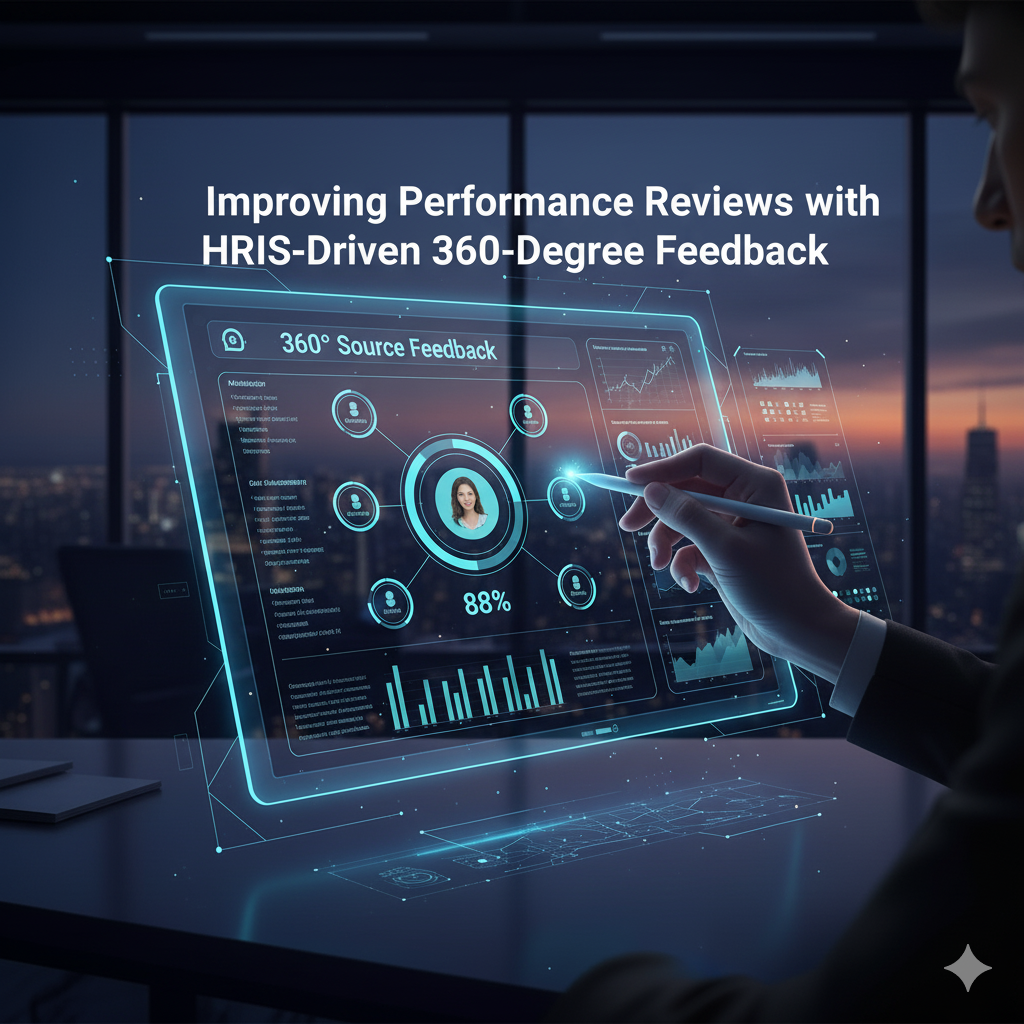Performance reviews are essential for measuring employee growth, identifying skill gaps, and aligning individual goals with organizational objectives. However, traditional reviews often rely solely on managerial input, which can lead to bias and incomplete evaluations. This is where HRIS-driven source feedback transforms the process by incorporating multi-source insights into performance appraisals. In this article, we’ll explore how HRIS enhances performance reviews through source feedback, its benefits, and why it’s a game-changer for modern HR management.
What is Source Feedback in Performance Appraisals?
Source feedback, often referred to as multi-source feedback or 360-degree feedback, gathers performance evaluations from multiple stakeholders, including:
- Managers
- Peers
- Subordinates
- Clients or external partners (in some cases)
This approach provides a more holistic and objective assessment of employee performance compared to traditional top-down reviews.
Limitations of Traditional Performance Reviews
Relying only on manager feedback can create several challenges:
- Bias and subjectivity
- Incomplete evaluation of employee contributions
- Lack of engagement from employees who feel unheard
- Delayed feedback cycles that don’t reflect real-time performance
These challenges make it difficult to fairly assess employees and may harm engagement and retention.
How HRIS Enhances Source Feedback
An HRIS (Human Resource Information System) integrates source feedback into the performance appraisal process by:
- Automating the collection of feedback from different sources
- Ensuring anonymity for honest and transparent responses
- Consolidating feedback into easy-to-read dashboards and reports
- Providing real-time analytics to identify performance patterns
By leveraging technology, HRIS makes source feedback efficient, structured, and data-driven.
Key Features of HRIS-Driven Source Feedback
- Automated Feedback Collection: HRIS platforms send reminders and collect input from multiple reviewers.
- 360-Degree Feedback Integration: Combines perspectives from managers, peers, and subordinates for balanced evaluations.
- Anonymity Options: Encourages honesty by protecting reviewer identity.
- Analytics & Reporting Tools: HR leaders can visualize performance strengths, weaknesses, and trends.
- Continuous Feedback Loops: Moves away from annual reviews toward ongoing feedback and development.
Benefits of HRIS-Driven Source Feedback
- Fair and Balanced Evaluations – Reduces bias by incorporating diverse perspectives.
- Employee Development – Identifies specific areas of strength and growth opportunities.
- Higher Engagement – Employees feel valued when feedback includes peers and colleagues.
- Informed Decision-Making – HR and managers rely on data-driven insights for promotions, merit adjustments, and training.
- Stronger Workplace Culture – Builds trust and accountability across teams.
The Future of Source Feedback in HRIS
Looking ahead, HRIS systems will integrate AI-driven sentiment analysis and predictive performance analytics to enhance feedback accuracy. Future innovations may include:
- Real-time feedback apps integrated with HRIS
- AI-powered suggestions for development plans
- Advanced bias detection to ensure fairness in evaluations
These advancements will help organizations create a continuous performance management culture that fosters growth and transparency.
Conclusion
HRIS-driven source feedback is revolutionizing performance reviews by making them more fair, transparent, and data-driven. By integrating multiple perspectives into appraisals, HR leaders can unlock a deeper understanding of employee contributions, foster engagement, and improve decision-making. As HR technology evolves, source feedback will continue to play a critical role in building a stronger, performance-oriented workplace.

